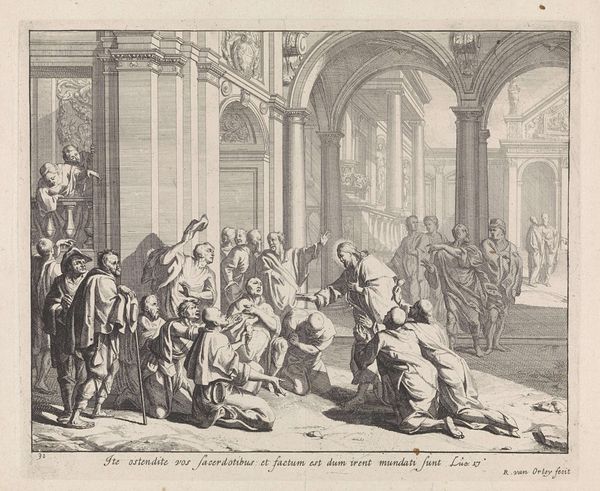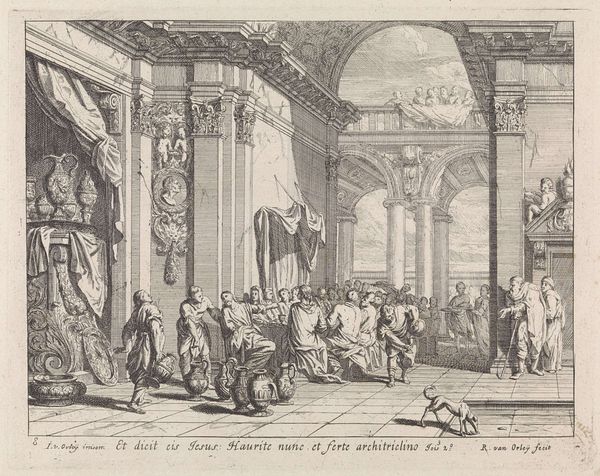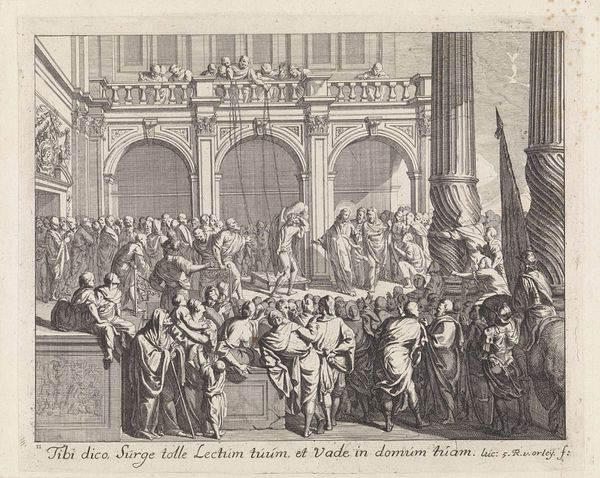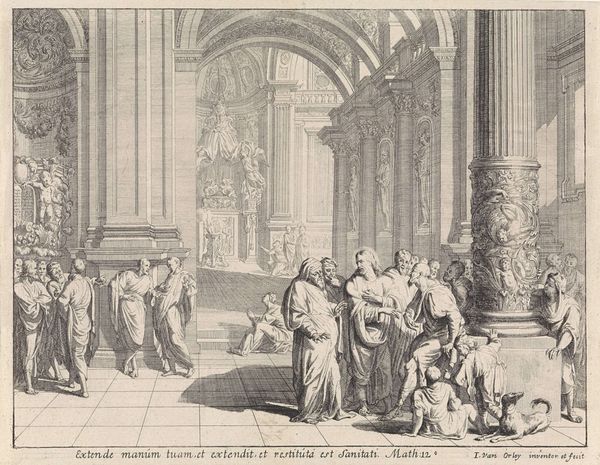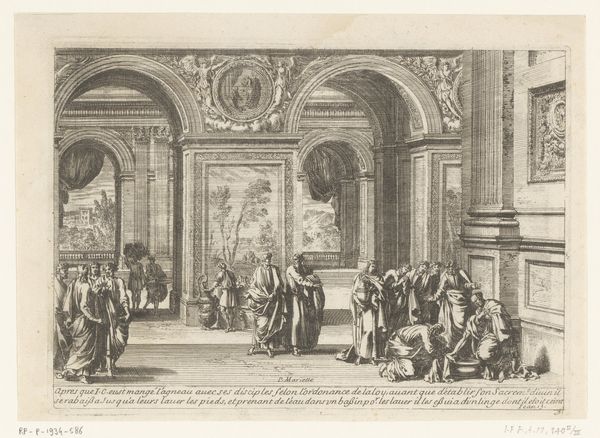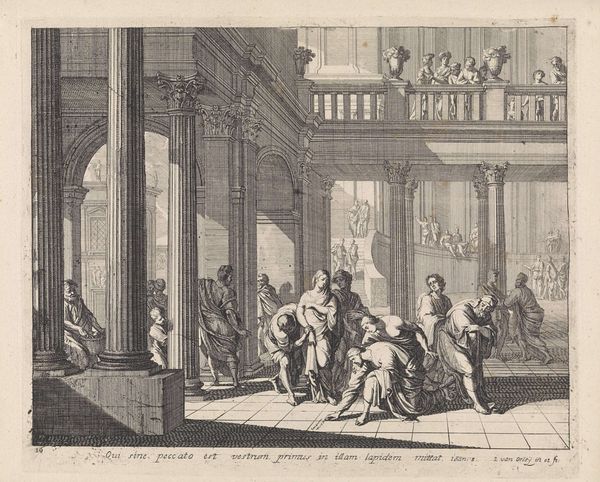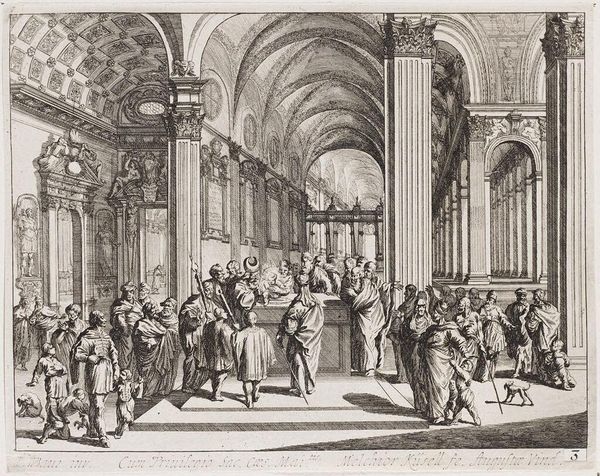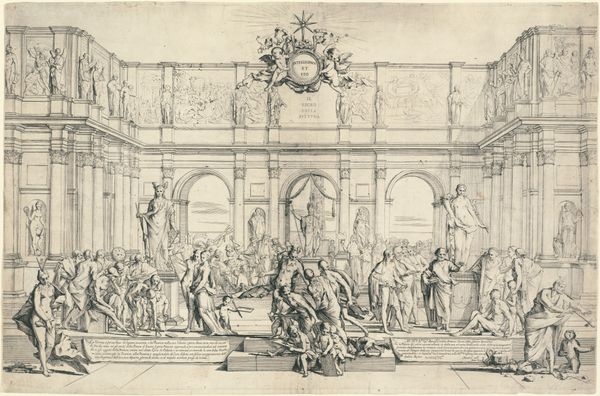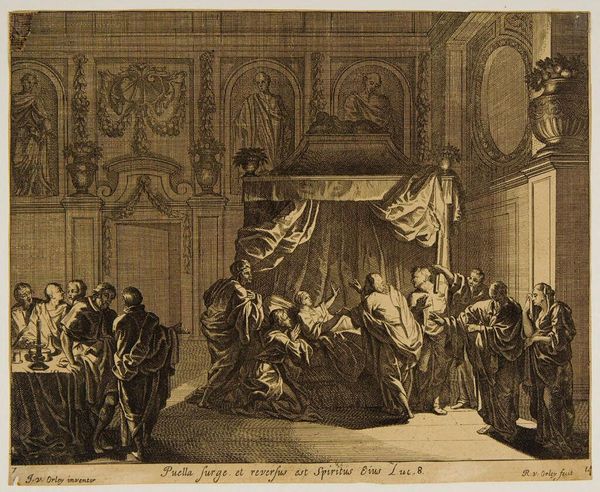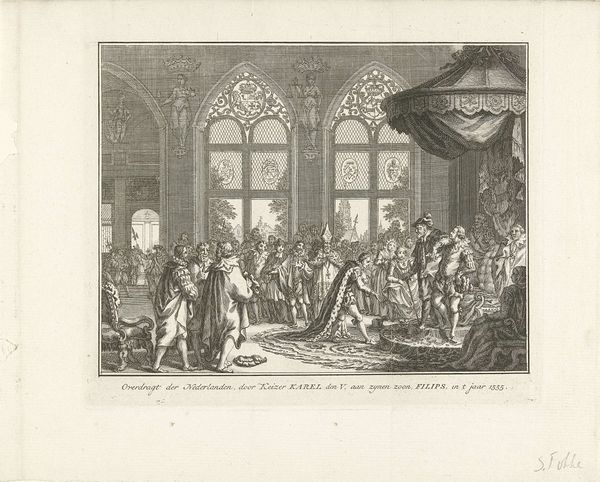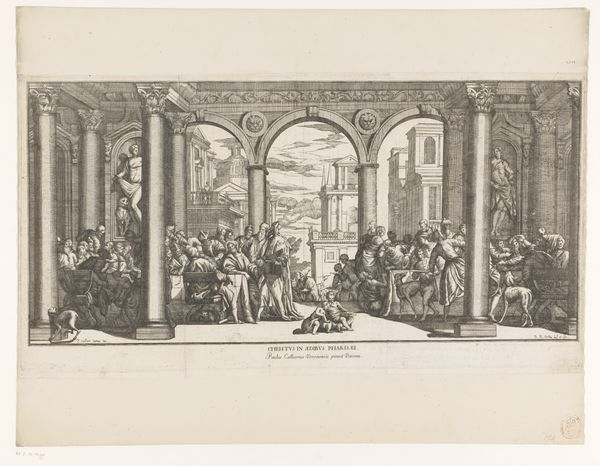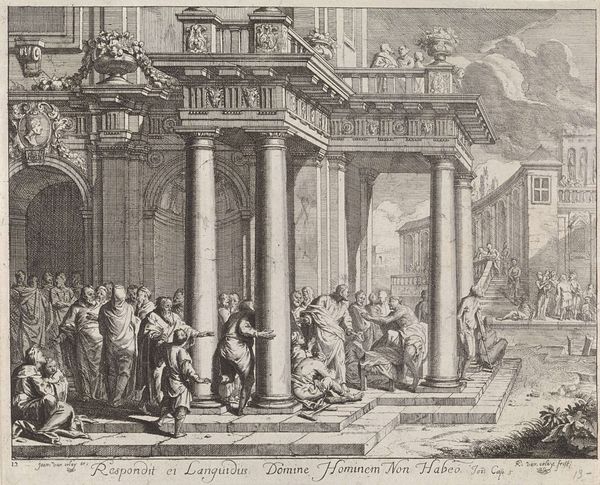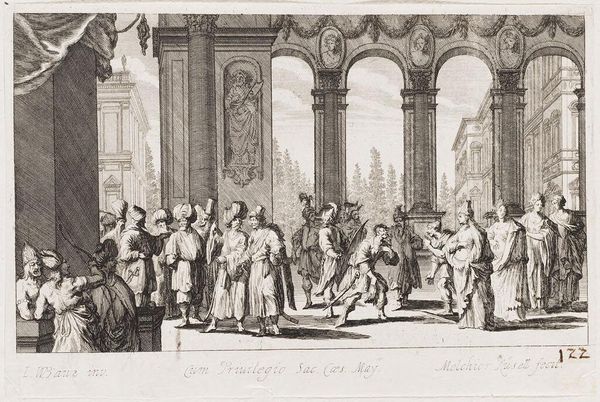
print, engraving
#
narrative-art
#
baroque
# print
#
pen sketch
#
pencil sketch
#
old engraving style
#
figuration
#
history-painting
#
engraving
Dimensions: height 210 mm, width 260 mm
Copyright: Rijks Museum: Open Domain
Curator: Before us we have an engraving titled "Healing of Christ on the Sabbath," by Jan van Orley, dating from before 1700. It’s quite striking, isn’t it? Editor: Yes, the initial impression is one of dramatic interplay between light and shadow. The architectural setting seems to confine and amplify the drama. Curator: Precisely. The architecture here functions not just as background, but also reinforces social dynamics within the depicted biblical narrative. Note how the figures cluster—who seems to have access and privilege, and who is relegated to the margins? The healed woman is freed, and it seems that Jan van Orley shows her new existence beyond the margins. Editor: Indeed. Semiotically, the columns and arches become a visual language denoting power and restriction. I am especially struck by how the artist’s deployment of hatching creates a remarkable sense of depth, almost pulling the viewer into the scene. It highlights Christ as an ethical leader. Curator: Absolutely. The print's success rests upon the way it visualizes socio-religious debates that remain resonant, because access to justice, to opportunity, or just care remains distributed inequitably. Van Orley presents us with more than a depiction of divine healing, instead creating space to meditate on equity. Editor: Agreed. Examining the piece formally, the artist employs a stark contrast—a dramatic Baroque technique—to draw focus, literally illuminating specific figures while casting others in shadow. Compositionally, this visual choice structures our understanding. Curator: Right, and historically it positions Van Orley's artistic agenda as politically and religiously astute, engaging the urgent socio-theological challenges that animated discourse across the Netherlands during this era. Van Orley certainly challenges his audience. Editor: On that, we wholeheartedly agree. Curator: Looking at Jan van Orley's decisions reminds me of just how enduring an artwork's relevance can be, as long as we can draw historical parallels. Editor: Absolutely. The composition's dynamism, coupled with the expressive rendering of human form, allows the engraving to powerfully connect even with today's viewer.
Comments
No comments
Be the first to comment and join the conversation on the ultimate creative platform.
